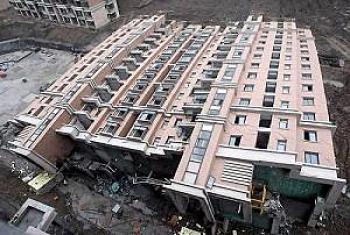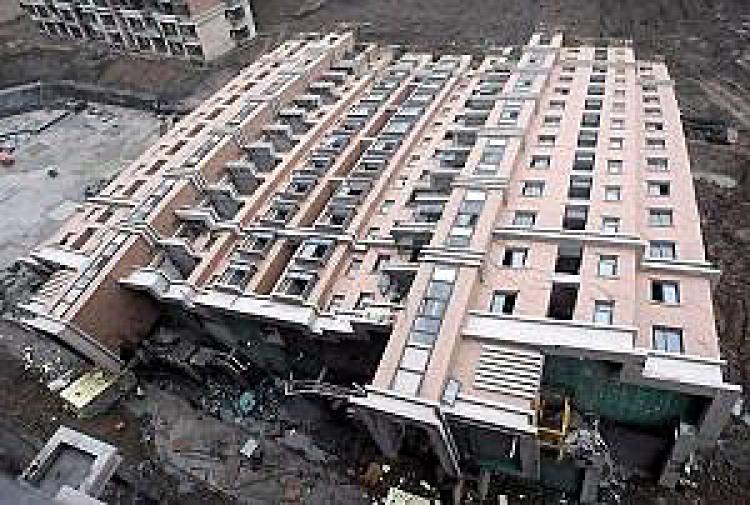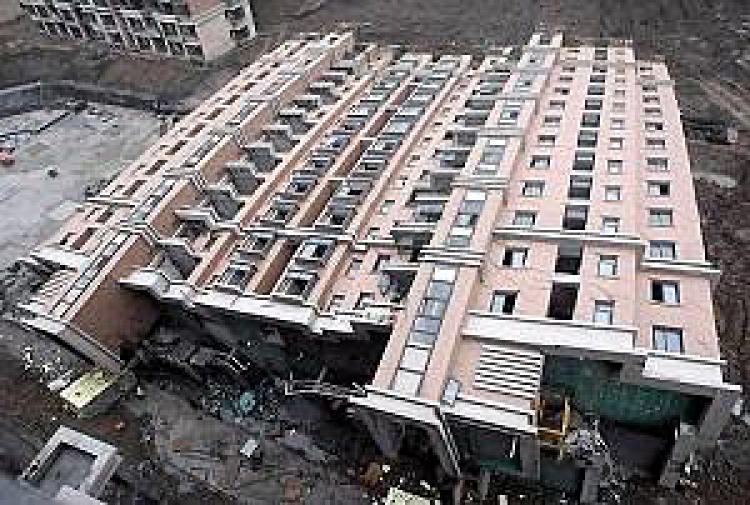The report claims that the large amount of soil piled up on the north side of the building and the digging of a basement garage on the south side of the building were responsible for the imbalance in horizontal force, which exceeded the lateral resistance capacity of the building’s foundation, resulting in the building falling over.
Dr. Lu from University of California disagrees with the report’s conclusion. Lu specializes in geotechnical engineering, a science that studies the engineering behavior of materials in order to achieve stability in architectural foundations.
According to Lu, soil piles and digging around a building do not normally cause a building to topple. If a large digging area should cause a building to topple, a tell-tale indicator such as gradual ground surface deformation would have been evident. The main factors that would cause a building to topple would be flawed design or inferior construction quality used in the foundation. With such criteria, a building could topple even when a small earthquake hits.
Lu explained that when a building is being constructed on the ground, the weight causes stress in a spherical area underground, known as a stress ball. The heavier the construction is, the bigger the stress ball gets. Soil outside of the stress ball normally does not deform. The toppled building was considered to be a high building. When it was being built, there was no record of abnormal deformation of the surrounding ground. This indicates that when the weight of the building gradually increased as it got taller, a stable stress ball had been formed underground. Localized soil piles or digging could not compromise the foundation’s stability, unless there were underlying design flaws or poor construction quality.
Regarding horizontal stress, Lu said that the soil piles referred to were not leaning directly against the building, and most of them were only several meters tall (the tallest was 10 meters (the equivalent of 30 feet.) The soil piles were not heavy enough to cause stress redistribution underground.
The official report also mentioned a 4.6-meter (14 foot) deep digging on the south side of the building. The report theorized that the digging relieved the underground stress, causing the stress ball area to redistribute. However, from the beginning when the digging began, there was no reporting of significant surface displacement on the south side of the building.
Lu provided a comparative example. On July 2, a road construction digging project in Shanghai resulted in a landslide. Several 14-story buildings sank and also sustained cracked walls. However, none of the buildings toppled.
Another analyst pointed out that Shanghai regime used prestigious experts to draw conclusions, covering up what really caused the building to topple, in order to avoid heated speculation about poor construction quality and related government corruption.
Read the original Chinese article.




